Standard Operating Procedure
Introduction
The horrors of modern wars are remembered due to the large media presence and the increase in communications technology; so the war in Vietnam brings to mind the famous photograph of a girl covered in napalm, the first Gulf War by the footage of the oilfields on fire and the recent conflict in Iraq with the infamous photographs of prisoner abuse in the jail at Abu Ghraib. The US prided itself on being on the right side of conduct in war but the photos showing the way that prisonrers were treated changed the view of many and made people like Lynndie England household names. Dismissed by the Department of Defense as a few 'bad apples', Private England and the other soldiers in Abu Ghraib were depicted as everything that was wrong with the way that America failed to capture the 'hearts and minds' when they invaded yet there was no wider investigation into what happened and some see it as a cover-up.
This conflict, and the wider War on Terror, has spawned a subgenre of war films such as The Battle For Haditha, Stop Loss, Redacted, In The Valley of Elah, Lions for Lambs and Rendition which, unlike almost any other war movie, have been made whilst the conflict is still ongoing.
Documentary filmmaker Errol Morris, famous for The Thin Blue Line and the Oscar-winning The Fog of War decided to interview those caught on camera, those who took the photos and as many people in Abu Ghraib at the time to get to the bottom of what really happened and why. This documentary comprises 'talking head' interviews with the soldiers who were punished, the original photos that were front page news with some recreations to supplement the interview footage.
Video
It's an unusual decision to shoot a documentary, predominately just of interviews, in widescreen and even stranger to release it in HD and the transfer is top-notch, with a pristine picture. The film is very cleverly put together with CGI used to recreate the prison to show the locations and illustrate how the timeline of the photographs was pieced together as the cameras had different internal clocks. The recreations may strike some as blurring the line between fact and fiction but given the dismissal of what happened by the top brass, a little dramatic effect can be forgiven. The real power is in the photographs which retain their ability to shock even five years after they were taken and came to light.
*The pictures contained in this review are for illustrative purposes only and do not reflect the image quality of the disc.*
Audio
This isn't the sort of film crying out for a high definition, multi-channel soundtrack but it gets not just one but three (though oddly the French is only in standard Dolby Digital 5.1) and it sounds superb, with crystal clear definition. Danny Elfman's score is excellent and perfectly suits the changing mood throughout the film.
Extra Features
First up is a commentary by Errol Morris in which he explains why he decided to make the film, how he got interviews with those featured and the difficulties he faced locating and getting permission with the notable absentees. This is the sort of commentary that you can watch again, getting more out of the film time and again and it's almost like a voiceover providing more information.
The Q&A with Errol Morris at the premiere is interesting and amusing, supplemented well by the Press Conference with Errol Morris and Julie Ahlberg as no questions are duplicated and Morris is forthright in his answers.
There are additional scenes and extended interviews that were removed probably for length reasons and these are no worse or less revealing than those in the feature. The extended interviews are just that and contain material featured in the finished documentary.
The main featurette is a panel discussion moderated by the Washington Bureau Chief for the Berliner Zeitung, Olivia Schoeller, called Diplomacy in the Age of Terror: The Impact of Diminished Rule of Law on International Relations which took place in Germany and whilst not being directly related to the film, covers similar issues in depth with five prominent figures. The panellists are: Dr. Allen Keller, Director of the NYU Survivors of Torture; Lord Peter Goldsmith, former UK Attorney General; Wolfgang Kaleck, General Secretary for the European Centre for Constitutional and Human Rights; Lionel Barber, Editor of The Financial Times; and Herta Daubler-Gmelin, Chairwoman of the Committee for Human Rights and Humanitarian Aid of the German Parliament. This took place after the premier at the Berlin Film Festival (where the film won the Silver Bear) and is a fascinating 45 minute discussion about the wider ramifications from America's conduct in its War on Terror. This would be worth a DVD release by itself so is an excellent supplementary feature and one worth watching for anyone with an interest in international relations and global politics.
There is also the Theatrical Trailer and previews for previews for upcoming films
Conclusion
Errol Morris has well and truly stamped his name as one of the finest documentary makers currently working. Unlike Michael Moore and Nick Broomfield he is never the star of his work, letting the subject(s) take the limelight and has already underlined the importance of his work with Randall Adams' life sentence overturned as a direct result of The Thin Blue Line. I first came across Morris with The Fog of War, a brilliant series of interviews with former US Secretary of Defense Robert McNamara and had high hopes for Standard Operating Procedure. I was not disappointed as this lifts the lid on one of the darkest periods in recent American history and Morris treads a fine line, not excusing the actions of the soldiers who took the photographs and posed for them but identifies them as the tip of an iceberg. He correctly asks why they are treated as criminals when they were showing the real crimes which include an Iraqi being tortured to death and his murder covered up.
Lynndie England almost became an overnight hate figure, shown in photographs with a prisoner on a leash and smiling and pointing at another's genitals while he is being forced to masturbate but it is clear that she was the result of a wider policy and not a 'rogue' member of the military. The information included in the film is shocking, not just the images already in the public domain, but the descriptions of the wider abuses and torture at Abu Ghraib including stress positions, sleep deprivation and waterboarding. Watching this it's clear that those punished - notably no higher than the rank of Staff Sergeant - are not the 'bad apples' but victims of the true criminals, perhaps going right up to Donald Rumsfeld himself.
The documentary paints a picture of a jail in crisis, with members of Other Governmental Agencies (CIA, FBI etc.) coming and 'extracting' information without any liaison with the ordinary soldiers who were involved either with following their instructions or clearing up the mess. Soldiers like England are shown as either in love with a superior officer or numbed to the horrors of war because they are in the middle of a warzone and, due to the daily shelling and attacks, have lost their moral compass and can no longer identify the people they see in the photographs. Morris doesn't say whether this excuses their actions; he leaves it up to you to decide.
This is an important and very well made documentary with excellent AV quality and has been given a fantastic package with well over three hours of supplementary material. It is a must buy for any fan of documentaries and anyone interested in the current conflict in Iraq.
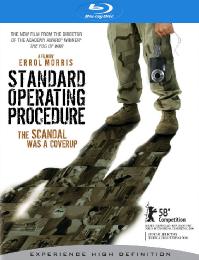



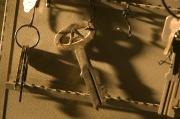
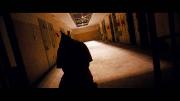

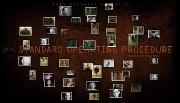
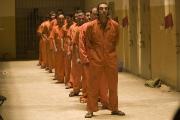











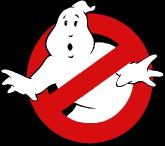
























Your Opinions and Comments
Be the first to post a comment!